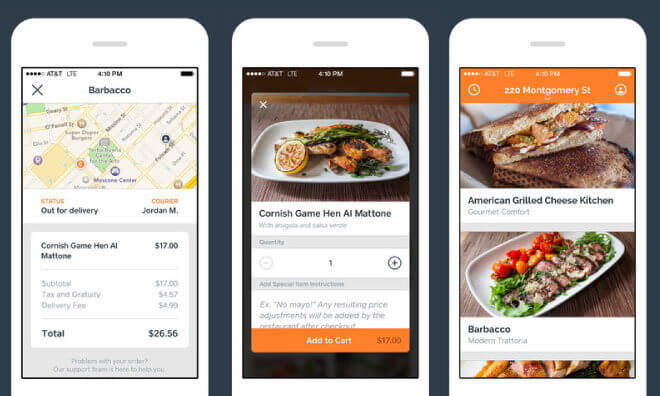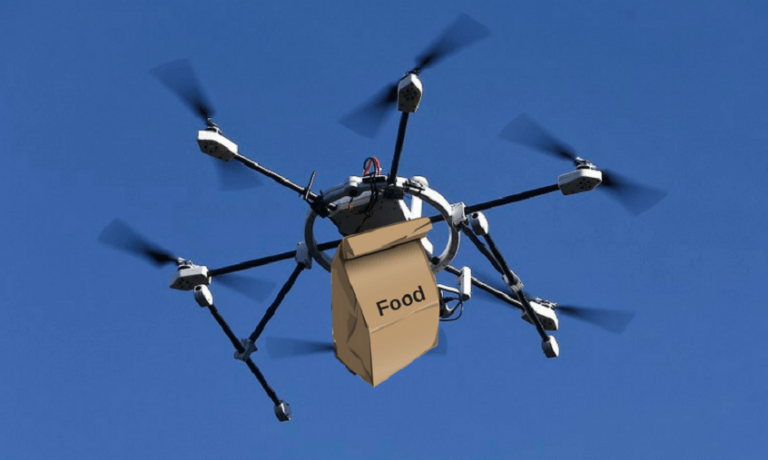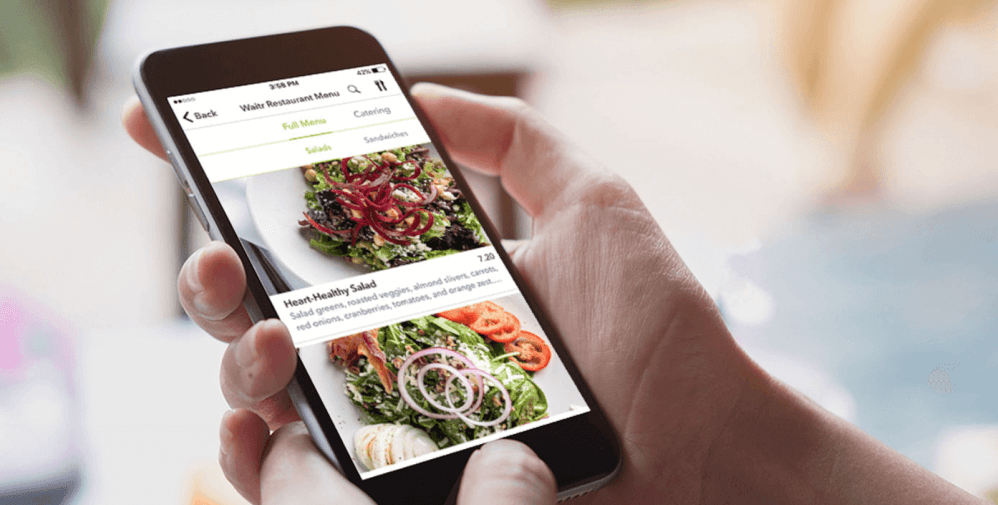Are you into a food ordering and delivery business? Then you should know that nowadays online meal ordering/delivery apps are not only feeding people all around the world but make profits out of it.
Consider this, with such platforms the revenue of restaurants have gone up already and will grow further. According to the Morgan Stanley Research, by 2022 online food delivery have all the power to comprise 11% of the total market compared to 8% today.

Why that happens, you ask? With modern technologies, people expect everything to be within the reach of the fingertips, especially when it comes to some vitally important things like food. The increased usage of mobile devices only contributes to the overall growth of delivery services of all kind around the whole world.
Convenience and speed are what makes such platforms stand out in our busy world. Ideally, customers want to get freedom of choice, flexibility that fits into a tough schedule, and great user experience. There are many examples of successful ordering and delivery services on the market, but there's always a window of opportunity.
In this article, you'll find out about the main things that you should know and do to make your own meal ordering and delivery platform. Let's get started!
Main steps and points in building a meal ordering and delivery platform
There are many things to consider when you've decided to develop an ordering and delivery platform. What you have to definitely remember is that it should be easy to use and give customers a possibility to get all the necessary steps done in just a few clicks.
Users roles
Of course, there are certain challenges on the way. One of the crucial ones is the importance of taking into account the variety of audiences that your platform should be developed for. As not only customers will use it for ordering and delivery tracking, but also restaurants and drivers should be able to use it from their side.
So we can distinguish three key roles that make the whole system work - customers, restaurants, and drivers. It means that each of them should receive a bit of different functionality to perform their tasks best. It results in the need to develop three app versions which should be thoughtfully performed by professional developers.
Types of ordering/delivery platforms
There are many types and forms of such systems. Some of them order-focused, the others are logistics-focused, but there are also full-service platforms present. The major meal delivery startup models dominating the nowadays market are aggregators and food delivery platforms with logistic support.
The Aggregator model acts as a third party between restaurants and customers. After registering, users can see all the spectrum of available cuisines and restaurants in the area. They can check menus, prices, ratings, reviews and once the decision is made just place an order. After the order confirmation, it is passed to the restaurant and in a while gets for delivery which is fully taken care of by the facility.
The Platform with logistics support is taking care of logistics by itself. A wider range of food facilities is covered by this model—food joints, small cafes, etc. It results in more revenue and a bigger presence of such facilities on the platform plus a much wider target audience.
As for the choice that restaurant owners usually make while deciding on the way they wish their services would be presented online—they mostly tend to choose one or the other online platform with a wider range of benefits in cooperation. Only a few choose to create their own application by giving their customers more personalized services.
Must-have features
It's up to you which startup model you choose, what's most important is what features will be there for customers that will make them willing to use your services and appreciate them by paying you more money.
-
Custom solution

You can get inspired by other platforms solutions while thinking of the way your app will look. Although you should definitely choose something new, absolutely unique. It might be based on the user’s preferences, your feature idea, and modern trends.
-
Starting small
It is easier to start small and has time to gather feedbacks and public reviews, put some professional’s tips on practice. This way you will have an opportunity to test your services and make improvements before scaling up. Once you’ve got the adequate expertise and have earned a good reputation on the market, it is time to push your business horizons further.
-
Market research
Researching your market niche state will help your business to excel. It is equally important to learn customer’s preferences and competitor’s actions from time to time. This will give you an understanding of what should be done for customers to satisfy their always changing demands and stand out on the market.
-
Search and menu
The first thing that potential customers will deal with is searching the restaurants along with checking their menus. This is where they are getting attracted to the platform design, usage convenience, and loading efficiency. All of these aspects lead to the final decision they make whether to place an order or check elsewhere. As you already understand, this point should be thought through very seriously.
-
Payment system

Nowadays all self-respecting food ordering platforms offer a built-in payment system. It should be secure, fast, easy-to-use, and maintain multiple popular payment options. Customers differ, so your system better be able to give all standard (credit/debit card, cash on delivery) and alternative payment variants (E-wallets, Apple Pay, Paypal, etc.). You can also plug in certain API’s like Square’s API that transfers customers to the Square App where they can easily pay in a secure and transparent way.
-
Real-time tracking
Customers prefer to be updated about the delivery status not just as it is but also because it might seem like an engaging game for them. Real-time location tracking gives them an understanding of the way processes happen in your company—from the point when the order got confirmed, came to the kitchen, got prepared to the estimated time of arrival and delivery itself.
-
Well-timed delivery
In the delivery process time means everything. If your customers get meals later than it was estimated they would probably stop using it for good. So it is better to give yourself a small margin. If you will be able to deliver faster than estimated users will appreciate it more and become more loyal to your services. Here’s the main thought—focus on quality first, and only then on quantity.
-
Technological delivery

You are free to choose all the possible ways to stand out and improve your services. For that using technological progress is not only some far-fetched desire but a reality already. For example, Dominos is the first company that has managed to adapt drone's capacity to deliver goods. More companies are already testing that option. Why can’t you?
-
Ratings and reviews
Public reviews, customer’s feedback, and overall ratings help to evaluate the quality of the services building relationships with consumers. Managers can see what should be improved in service or product itself, customers have a chance to speak up. Services that have a good reputation might not only get more loyal clientele but receive additional revenue from satisfied users via tips.
-
Smartwatch friendly
Smartwatches are getting more popular and provide additional perks for its users. If you will manage to provide a corresponding extension for your potential customers, some of them will consider it an additional point of convenience when choosing a food delivery platform. As it gives them quick notifications, real-time delivery tracking, and some other advantages without the need to check their other devices. A simple hand gesture is enough here!
-
Lock-screen widgets
Such widgets is another way to make all the process more convenient for a customer and thus provide a better service. Exclusive discounts or delivery tracking may appear there. Additional features might make your service even more pleasant—it’s up to you to explore!
-
Friendly to social media channels
People love social media. They tend to spend there more and more time sharing news, getting likes, checking someone’s statuses, etc. Would they like to share their food ordering experience? Most probably! Moreover, they can also check what meals other people rate high which might influence their choice and express emotions.
The range of features may vary for your platform. As an experienced development team, we recommend you to entrust the tech part of the development to professionals that will lead you through the whole creation flow and help you to make it a reality.
Conclusion
Food ordering and delivery businesses are continuously shifting their processes: from old-fashioned orders with phone calls to the modern delivery with drones. Brand new features and innovative technologies are brought-in almost every day.
Why wait longer? Start exploring the market, find the right technology partners and dive into an exciting journey of delivering a perfect on-demand service!



